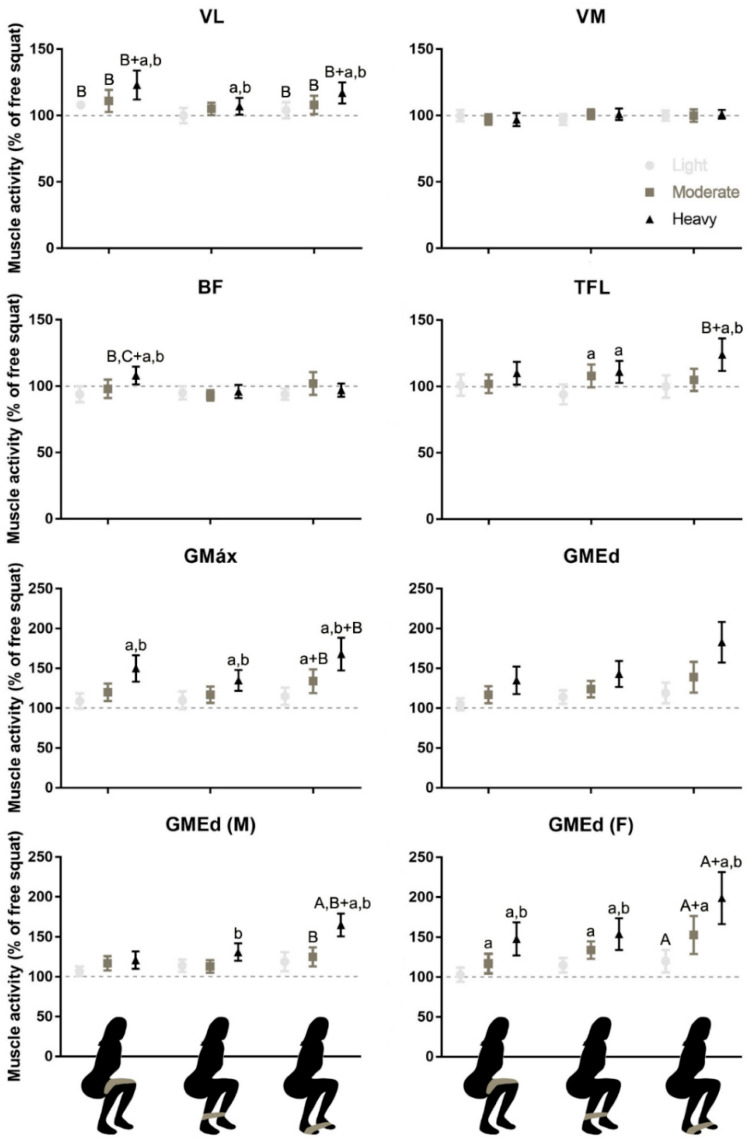Figure 1.
Estimated mean and confidence intervals of the myoelectric activity of vastus medialis (VM), vastus lateralis (VL), biceps femoris (BF), gluteus maximus (GMAX), gluteus medius (GMED), and tensor fascia late (TFL) during squatting for all combinations of band stiffness (light, moderate, and heavy) and band position (illustrated at the bottom) tested in this study. Myoelectric activity measured for the entire squat cycle was normalized to the myoelectric activity obtained in squatting without elastic resistance (100%). Interactions between sex and band stiffness were observed for the GMED, so inferential results are shown for men (M) and women (W) separately. Interactions between the effects of band position and stiffness were observed for the GMED (M), GMAX, TFL and BF muscles. Dashed line indicates the myoelectric activity during the free squat with no band. Small letters (a, b) indicate greater, for a given position, myoelectric activity compared to the light, moderate, and heavy band stiffness, respectively. Capital letters (A, B, C) indicate, for a given stiffness, greater myoelectric activity compared to the band around the thigh, the lower leg, and the forefeet respectively.

